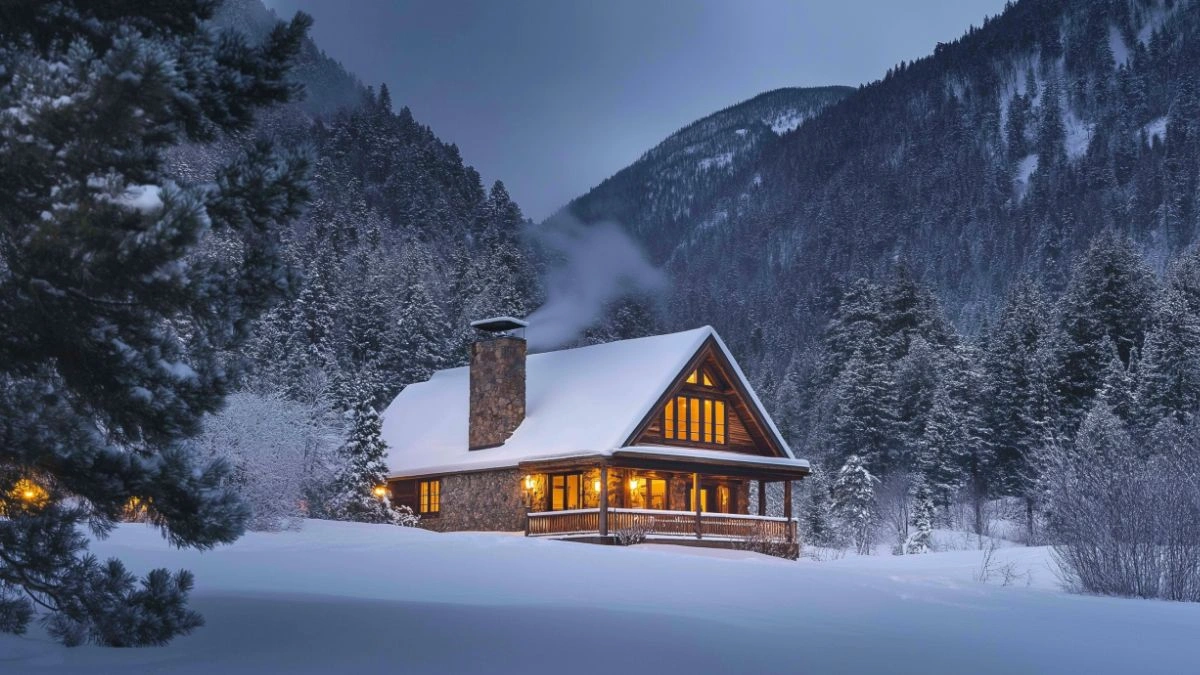Best Times to Visit the Rocky Mountains: Seasonal Travel Tips
Table of Contents
With their sweeping alpine views, dramatic peaks, and endless trails, the Rocky Mountains remain one of North America’s most iconic and beloved destinations. Stretching from Canada to New Mexico, the Rockies attract over 60 million visitors annually. But when is the best time to go? The answer depends on what kind of adventure you’re seeking.
Each season in the Rocky Mountains offers its own charm—from powder-covered ski resorts in winter to wildflower meadows and wildlife sightings in summer. While some travelers dream of crisp autumn hikes through golden aspen groves, others crave the solitude of spring’s melting snowfields. Understanding the nuances of each season can help you plan a trip that’s not only scenic but also stress-free.
In this detailed guide, you’ll explore the best times to visit the Rocky Mountains based on weather, crowds, activities, and travel style. Whether you’re a photographer chasing golden hour, a hiker ready to summit peaks, or a family planning a summer road trip, these seasonal travel tips will help you make the most of your Rocky Mountain experience.
Spring in the Rockies: Awakening Trails and Quiet Exploration
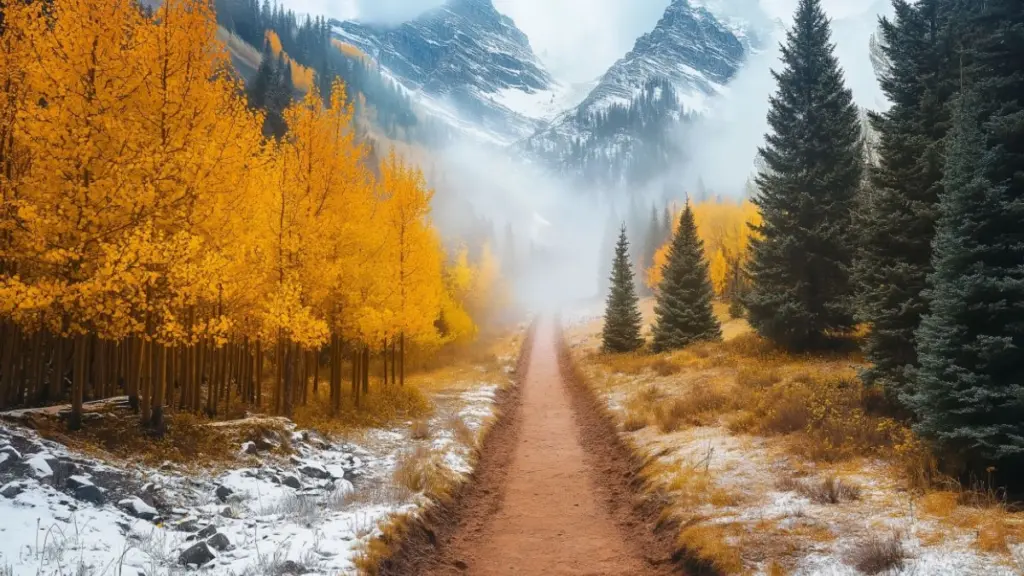
Spring in the Rocky Mountains is a shoulder season—often overlooked, but full of raw beauty and peace. Snow lingers in the higher elevations, but the lower valleys begin to bloom with early wildflowers, waterfalls, and migrating wildlife.
What to Expect in Spring (March–May):
| Factor | Details |
|---|---|
| Temperature | 30–60°F depending on elevation |
| Pros | Fewer tourists, scenic drives, wildlife viewing |
| Cons | Unpredictable weather, trail closures due to snow |
| Top Activity | Photography, scenic road trips, birdwatching |
Many national park roads begin to open in April, but snowshoeing and light trekking are still common in early spring. If you’re looking for solitude and don’t mind chilly mornings, this is a peaceful time to visit.
Summer in the Rockies: Hiking, Lakes, and Wildflower Wonders
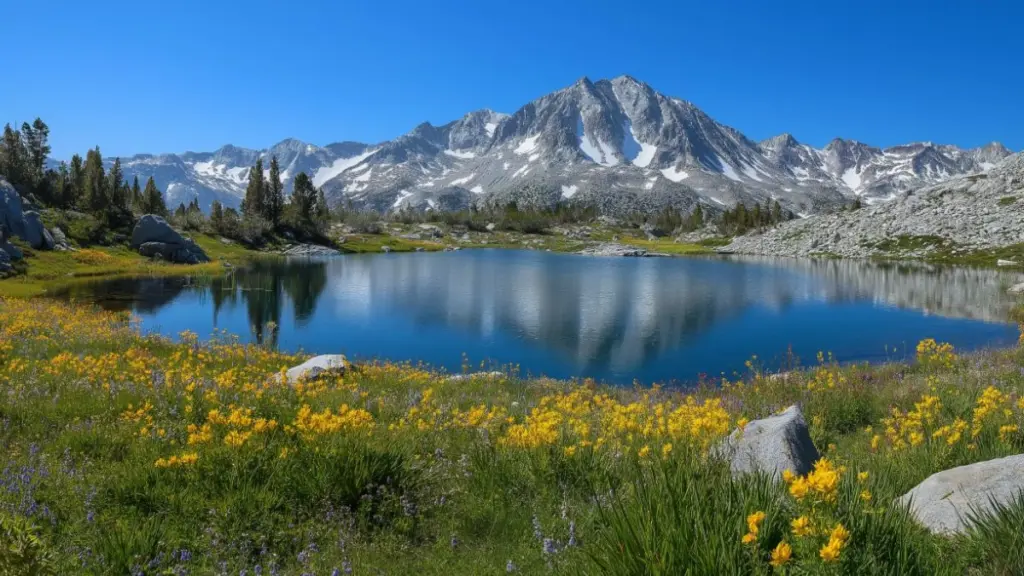
Summer is arguably the most popular time to visit the Rocky Mountains—and for good reason. From June through August, the region bursts into life with clear skies, warm temperatures, and access to nearly every trail, lake, and lookout point.
Why Summer Shines in the Rockies:
| Factor | Details |
|---|---|
| Temperature | 50–80°F depending on altitude |
| Pros | Full trail access, wildflowers, camping, festivals |
| Cons | Higher prices, crowded national parks |
| Top Activity | Backpacking, stargazing, kayaking, festivals |
Rocky Mountain National Park, Glacier, and Banff see peak visitation during these months. Early mornings and weekdays help avoid heavy foot traffic. Backpackers should plan and reserve permits early for popular trails like the Skyline Trail or Colorado’s Fourteeners.
Fall in the Rockies – Golden Aspens and Crisp Air
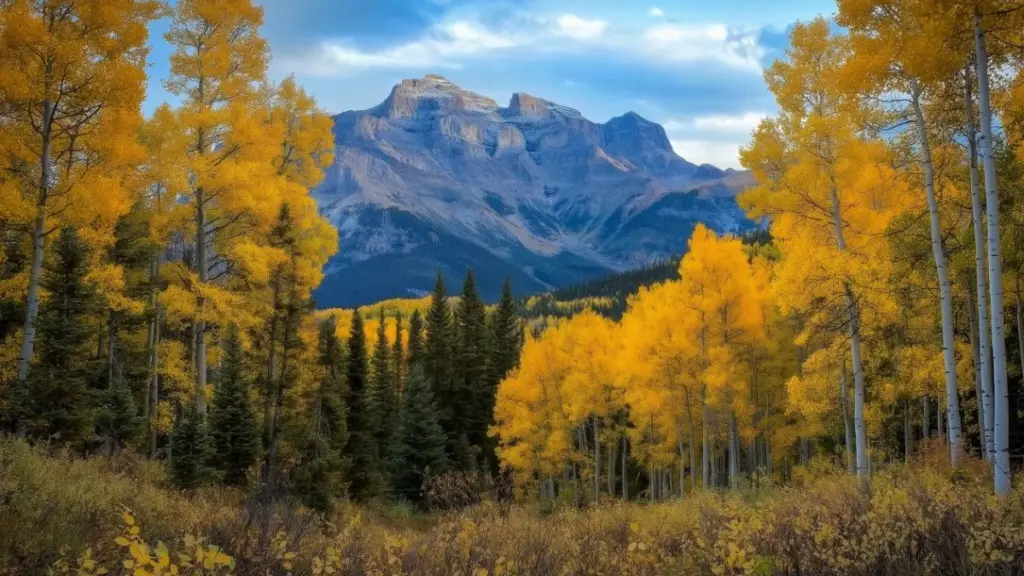
Fall in the Rockies is a visual masterpiece. By mid-September, the aspens turn golden, painting mountainsides in fiery hues of yellow and orange. Temperatures drop slightly, but crowds thin, creating an ideal balance of beauty and tranquility.
Why Fall Is a Favorite for Many Travelers:
| Factor | Details |
|---|---|
| Temperature | 30–65°F with crisp mornings |
| Pros | Stunning foliage, fewer tourists, cooler hiking weather |
| Cons | Early snowfall in higher elevations possible |
| Top Activity | Leaf-peeping, photography, moderate hiking |
September and early October are ideal for day hikes like Alberta Falls in RMNP or the Larch Valley Trail in Canada’s Rockies. Trail conditions are stable, and wildlife—especially elk and moose—are frequently visible during rutting season.
Fall also marks the end of the busy season for local towns like Estes Park or Banff, making it easier to find deals on lodging and activities.
Winter in the Rockies: Snowy Peaks and Ski Adventures
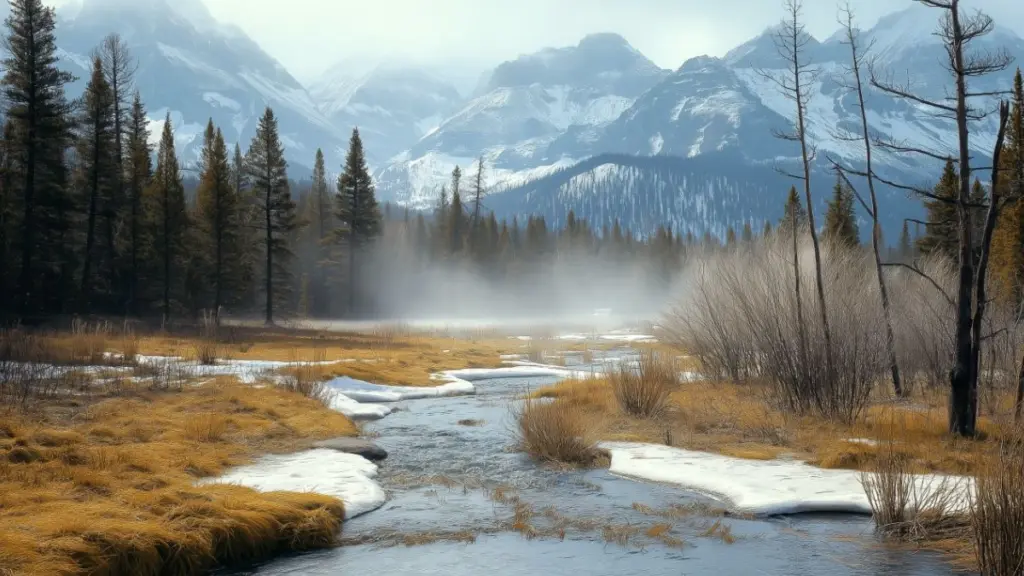
Winter in the Rockies is a wonderland. Powdery snow blankets the peaks, ski towns glow with holiday lights, and quiet trails turn into magical snowshoe paths. It’s perfect for snow lovers and cozy cabin getaways.
Winter Travel Insights (December–February):
| Factor | Details |
|---|---|
| Temperature | 10–40°F, colder at high altitudes |
| Pros | Skiing, snowboarding, festive towns, cozy lodges |
| Cons | Road closures, avalanche risk, cold temperatures |
| Top Activity | Skiing in Aspen, Breckenridge, Banff; hot springs soaking |
Major ski resorts across Colorado, Montana, and Alberta thrive during this season. If you prefer solitude, try winter hiking with microspikes or snowshoeing in less trafficked areas like Jasper or Grand Lake.
Pack layers, waterproof gear, and check avalanche forecasts before heading off-road.
Comparing Rocky Mountain Seasons at a Glance
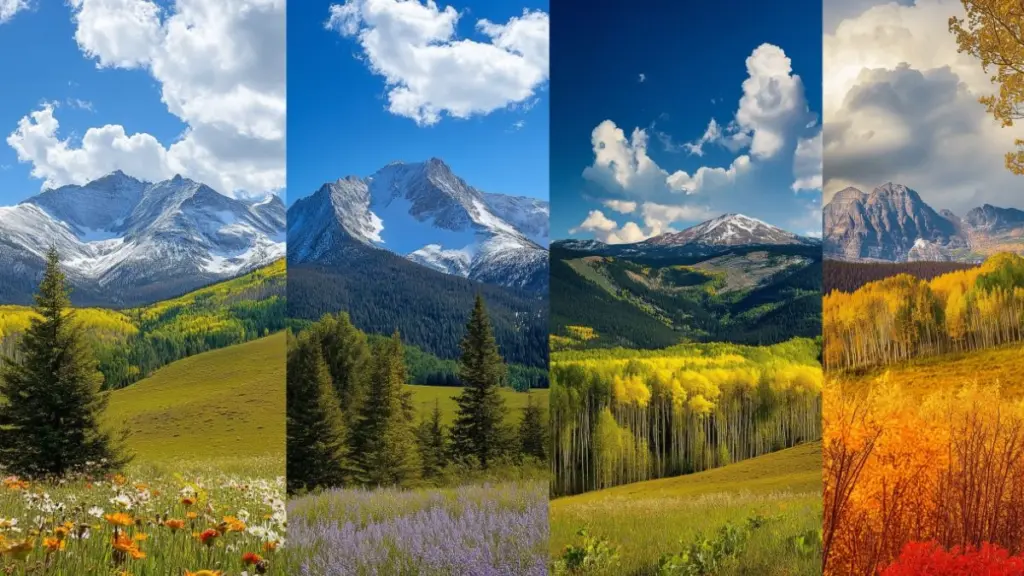
If you’re short on time and need a quick reference, here’s a seasonal breakdown to help plan the perfect Rocky Mountain getaway based on your interests.
Rocky Mountains Seasonal Comparison Chart:
| Season | Best For | Downsides | Ideal Travel Style |
|---|---|---|---|
| Spring | Wildlife, quiet scenery, waterfalls | Unpredictable weather, partial access | Slow travelers, photographers |
| Summer | Hiking, camping, family trips | Crowds, higher costs | Active adventurers, groups |
| Fall | Foliage, mild temps, photography | Early snow, limited daylight | Nature lovers, couples |
| Winter | Skiing, cozy getaways, snow sports | Cold weather, fewer hiking options | Skiers, snowshoers, romantic trips |
This table gives a quick snapshot of what each season offers. Ultimately, the best time to visit the Rocky Mountains depends on what you want out of your experience.
Tips for Visiting During Shoulder Seasons (April/May & September/October)
Traveling in the shoulder seasons is ideal for those looking to avoid crowds and find better prices—if you’re willing to work around some limitations.
Shoulder Season Benefits and Tips:
| Month | What to Expect | Travel Tips |
|---|---|---|
| April–May | Melting snow, wildlife sightings, moody weather | Pack layers, check trail conditions |
| September–October | Foliage, quieter towns, crisp hiking | Book early for foliage weekends |
Many lodges, campgrounds, and seasonal restaurants close mid-fall, so plan accommodations ahead. However, the tradeoff in tranquility and savings is often worth it.
Wildlife Watching by Season: What to Look For and When
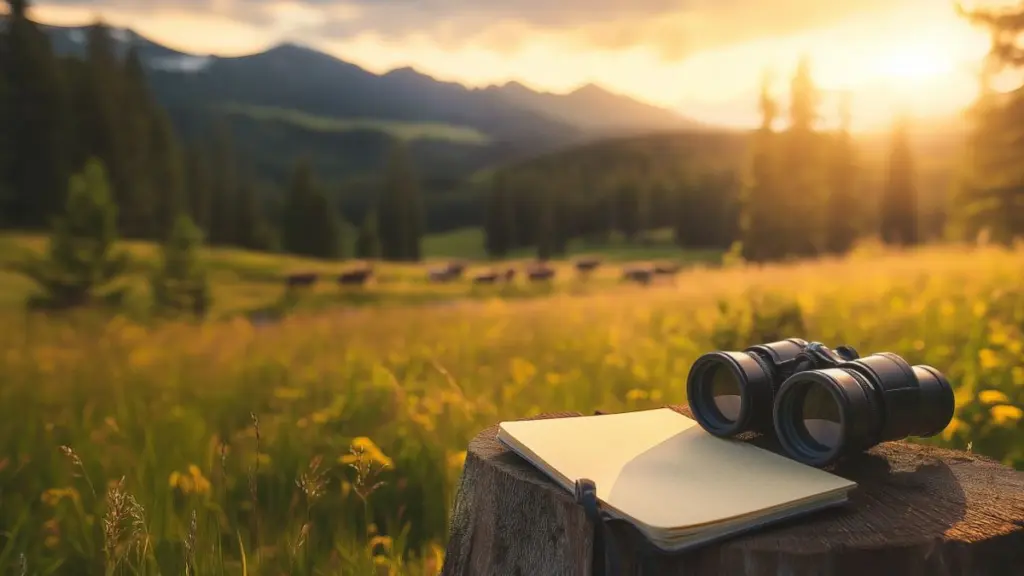
Wildlife is a highlight of any Rocky Mountain trip—and different seasons offer different viewing opportunities.
Seasonal Wildlife Highlights:
| Season | Wildlife Activity |
|---|---|
| Spring | Elk calving, bear emergence, moose in wetlands |
| Summer | Birds, marmots, active bear sightings |
| Fall | Elk rut, migrating birds, moose in alpine meadows |
| Winter | Tracks in snow, foxes, bald eagles, bison in lower valleys |
Always observe animals from a distance and never feed wildlife. Bring binoculars, zoom lenses, and read local safety guides on bear and moose behavior.
Conclusion
The Rocky Mountains shine in every season, offering a different kind of magic whether you’re surrounded by snowflakes or wildflowers. From the quiet stillness of a spring morning to the dazzling color show of fall foliage, there’s truly no bad time to visit—just different types of beauty to discover. By understanding the seasonal rhythms of the Rockies, you can choose the time that best matches your travel style and expectations. Whether you’re chasing powder, sunshine, or golden leaves, the Rocky Mountains will meet you with open peaks and unforgettable views.

